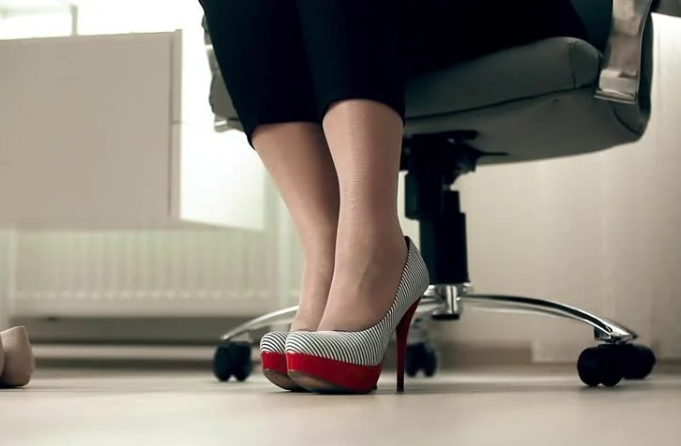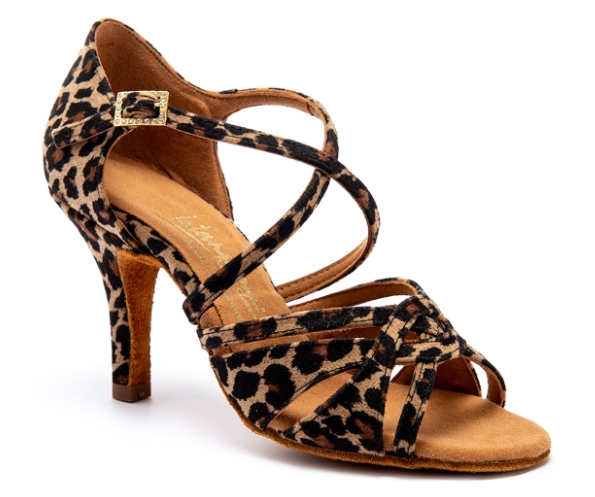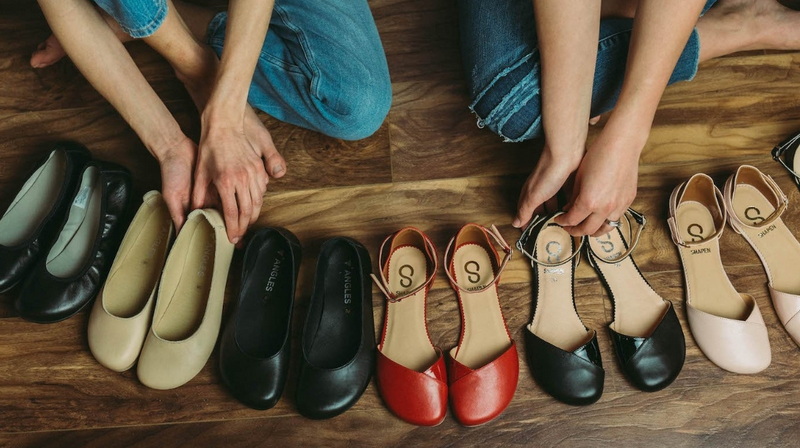Content Menu
● The Global Context: Shoe Removal Traditions
>> Cultural Practices Around the World
>> Modern Office Adaptations
● The Debate: Comfort vs. Professionalism
>> Why Do Some Women Take Off Their Shoes at Work?
>> Arguments Against Shoe Removal
>> Public Opinion and Office Policies
● Hygiene and Health: The Science Behind Shoe Removal
>> What Do Shoes Bring Indoors?
>>> Key Findings:
>> Health Benefits for Employees
● Office Policies: To Remove or Not to Remove?
>> Company Approaches
>> Safety and Legal Considerations
● Gender Perspectives: Is This a Women's Issue?
● The Future of Footwear in the Office
>> Trends and Predictions
>> Best Practices for Employees and Employers
● Conclusion
● FAQ
>> 1. Is it unprofessional for women to take off their shoes at work?
>> 2. Are there health benefits to removing shoes in the office?
>> 3. What are the hygiene concerns with taking off shoes at work?
>> 4. How do different cultures approach shoe removal in the workplace?
>> 5. What is the best compromise for offices with mixed opinions on shoe removal?
● Citations:
The question of whether women take off their shoes at the office is more than a matter of comfort or personal preference—it touches on workplace etiquette, cultural norms, hygiene, health, and even the evolving nature of office environments. This comprehensive article explores the practice from multiple perspectives, examining global customs, workplace policies, health implications, and the ongoing debate about professionalism and comfort. By the end, you'll have a nuanced understanding of why some women (and men) choose to remove their shoes at work, the factors influencing this decision, and what it means for modern office culture.

The Global Context: Shoe Removal Traditions
Cultural Practices Around the World
Shoe removal customs vary significantly across cultures. In many Asian countries, such as Japan, Vietnam, and Malaysia, removing shoes before entering homes—and sometimes workplaces—is a deep-rooted tradition linked to cleanliness and respect[1][12]. For example:
- Japan: Many offices, particularly smaller or traditional ones, require employees to swap outdoor shoes for indoor slippers (uwabaki). This is especially common in research labs, clinics, and some creative or R&D spaces[4].
- Vietnam: Removing shoes is a sign of respect and cleanliness, extending to certain businesses and medical offices. Slippers are often provided for indoor use[12].
- Turkey and Iran: Removing shoes before entering homes is the norm, and in some private businesses, this tradition persists[1].
In contrast, Western countries like the United States, the UK, and Australia typically do not require shoe removal in offices, although the practice is gaining attention for hygiene reasons.
Modern Office Adaptations
While traditional customs persist in some regions, globalization and changing work environments have led to more relaxed or hybrid approaches. Some companies now encourage or require employees to switch to indoor footwear, especially in creative, tech, or wellness-oriented workplaces[8].
The Debate: Comfort vs. Professionalism
Why Do Some Women Take Off Their Shoes at Work?
There are several reasons women might choose to remove their shoes in the office:
- Comfort: High heels and formal shoes can be uncomfortable during long work hours. Removing shoes offers relief and allows feet to breathe[11].
- Health: Tight or ill-fitting shoes can cause foot pain, blisters, and long-term health issues. Some women prefer to slip off their shoes at their desks to avoid these problems.
- Relaxed Office Culture: As workplaces become more casual, especially post-pandemic, the boundaries between home and office comfort have blurred. Some employees treat the office as a "second home," feeling comfortable enough to ditch their shoes, at least while at their desks[2][3].
- Hygiene: Some workplaces, particularly those with carpeted floors or wellness initiatives, encourage removing outdoor shoes to keep the environment cleaner[8].
Arguments Against Shoe Removal
Despite these reasons, taking off shoes at work remains controversial:
- Professionalism: Many view shoe removal as unprofessional or inappropriate, especially in client-facing roles or formal business settings[2][3][13].
- Hygiene Concerns: Bare or socked feet can raise hygiene issues, particularly if feet are not clean or have an odor, which can be unpleasant for colleagues[2][13].
- Safety: Offices are not always designed for barefoot walking. Risks include slips, trips, or stepping on sharp objects, raising liability concerns for employers[7].
Public Opinion and Office Policies
Online debates and workplace discussions reveal a split in opinion. Some advocate for comfort and flexibility, while others insist on maintaining traditional standards of dress and decorum[2][6][13]. Companies are increasingly developing explicit policies to address the issue, ranging from allowing shoe removal at desks to banning it entirely except in designated areas[7][8].
Hygiene and Health: The Science Behind Shoe Removal
What Do Shoes Bring Indoors?
Scientific studies have shown that the soles of shoes can carry hundreds of thousands of bacteria, including E. coli and other pathogens, as well as chemicals, allergens, and pollutants[5][14][15][16]. Tracking these into offices can compromise indoor air quality and increase the risk of illness, particularly in shared spaces.
Key Findings:
- Shoes can harbor over 421,000 units of bacteria, including harmful strains[5][14].
- Shoes also collect allergens like pollen and dust, and chemicals from treated surfaces[5][15].
- Removing shoes helps maintain cleaner floors, reduces cleaning needs, and may extend the life of carpets and flooring[16].
Health Benefits for Employees
- Foot Health: Allowing feet to breathe and move naturally can reduce the risk of fungal infections, blisters, and foot pain[5][14].
- Reduced Allergens: Removing shoes limits the spread of allergens, benefiting those with sensitivities or respiratory conditions[5][15].
- Mental Relaxation: The act of removing shoes can create a sense of comfort and relaxation, helping employees feel more at ease and potentially boosting productivity[15].

Office Policies: To Remove or Not to Remove?
Company Approaches
Workplaces handle shoe removal in various ways, depending on culture, industry, and office layout:
- Strict Policy: Some companies prohibit shoe removal, citing professionalism, hygiene, and safety[2][3][7].
- Flexible Policy: Others permit employees to remove shoes at their desks but require shoes to be worn when moving around the office[7].
- No Outdoor Shoes: A few innovative companies have banned outdoor shoes entirely, requiring employees to change into indoor footwear upon arrival. Benefits cited include reduced noise, cleaner offices, and increased comfort[8].
Safety and Legal Considerations
Employers must consider potential risks, such as slips, trips, or emergency evacuations. Policies may require employees to keep shoes nearby in case of fire drills or emergencies[7]. In some cases, the compromise is to allow shoe removal only while seated at one's desk, not when walking around the office.
Gender Perspectives: Is This a Women's Issue?
While the question focuses on women, both men and women may remove their shoes at work for similar reasons. However, women may be more likely to do so due to footwear choices—high heels and tight shoes are more common in women's professional attire, often leading to discomfort[11].
Online forums and workplace anecdotes suggest that women are sometimes criticized more harshly for removing their shoes, with the behavior seen as unprofessional or "unladylike" in traditional settings[3][13]. However, as office cultures evolve, these attitudes are gradually shifting.
The Future of Footwear in the Office
Trends and Predictions
- Hybrid Work and Comfort: As remote and hybrid work models persist, expectations for office attire—including footwear—are becoming more relaxed. Comfort is increasingly prioritized, and some companies are rethinking strict dress codes.
- Focus on Wellness: Companies emphasizing employee wellness may be more open to flexible footwear policies, recognizing the health and hygiene benefits.
- Cultural Sensitivity: Multinational offices may adopt hybrid approaches, accommodating employees from cultures where shoe removal is the norm.
Best Practices for Employees and Employers
- For Employees: If you wish to remove your shoes at work, ensure your feet are clean, odor-free, and presentable. Consider bringing indoor slippers or supportive socks.
- For Employers: Develop clear, written policies that balance comfort, professionalism, hygiene, and safety. Communicate expectations to all staff and provide alternatives (e.g., indoor shoes) if outdoor shoe removal is allowed.
Conclusion
The practice of removing shoes at the office is shaped by a complex interplay of cultural traditions, workplace norms, health considerations, and personal comfort. While more common in certain cultures and industries, it remains controversial in many Western offices, where professionalism and hygiene concerns often take precedence. As workplaces become more flexible and wellness-oriented, attitudes toward shoe removal may continue to evolve.
Ultimately, whether women (or anyone) take off their shoes at work depends on company policy, office culture, and individual preference. The key is to strike a balance between comfort and professionalism, respecting both personal needs and the shared environment.

FAQ
1. Is it unprofessional for women to take off their shoes at work?
It depends on the office culture and company policy. In formal or client-facing environments, removing shoes is often seen as unprofessional. However, in more relaxed or creative workplaces, it may be acceptable, especially if done discreetly at one's desk[2][3][13].
2. Are there health benefits to removing shoes in the office?
Yes. Removing shoes can reduce foot pain, prevent blisters, and minimize the spread of bacteria and allergens. However, employees should ensure their feet are clean and odor-free to maintain a pleasant environment[5][14][15].
3. What are the hygiene concerns with taking off shoes at work?
Bare or socked feet can contribute to hygiene issues, especially if feet are not clean or have an odor. Shoes themselves can carry bacteria and allergens, so some offices prefer employees to change into indoor footwear rather than go barefoot[5][13][16].
4. How do different cultures approach shoe removal in the workplace?
In many Asian countries, removing shoes before entering homes and some workplaces is customary. In Western countries, the practice is less common but may be adopted in certain offices for hygiene or comfort reasons[1][4][12].
5. What is the best compromise for offices with mixed opinions on shoe removal?
A common solution is to allow employees to remove shoes while seated at their desks but require shoes to be worn when walking around the office. Providing indoor slippers or supportive socks can also be a good compromise[7][8].
Citations:
[1] https://en.wikipedia.org/wiki/Removal_of_footwear_indoors
[2] https://10play.com.au/theproject/articles/workers-taking-their-shoes-off-in-the-office-sparks-heated-debate/tpa241107yhluf
[3] https://www.mumsnet.com/talk/am_i_being_unreasonable/2792773-People-who-remove-their-shoes-in-an-office-environment
[4] https://www.reddit.com/r/japan/comments/z1mjn/japanese_take_shoes_off_at_home_do_they_take/
[5] https://bymatter.com/blogs/news/healthy-home-habits-why-going-shoe-free-indoors-is-essential-for-cleanliness-and-wellness
[6] https://www.linkedin.com/pulse/ok-take-your-shoes-off-work-alan-jayne
[7] https://www.healthandsafetytips.co.uk/forums/viewtopic.php?t=52596
[8] https://pixeldreams.com/news/policies-memos/policy-no-outdoor-shoes-in-the-office/
[9] https://www.shutterstock.com/video/search/woman-takes-off-shoes
[10] https://www.youtube.com/watch?v=YzMrr3erYQs
[11] https://www.youtube.com/watch?v=s-xXGkZZnHA
[12] https://vietnamteachingjobs.com/blog/removing-shoes-in-vietnam/
[13] https://www.bbc.com/news/blogs-magazine-monitor-23357672
[14] https://thocc.org/about/news-press/news-detail?articleId=45837&publicid=395
[15] https://www.eagleservicecompany.com/5-reasons-to-leave-shoes-at-the-door/
[16] https://www.healthline.com/health/taking-off-your-shoes
[17] https://www.reddit.com/r/womenEngineers/comments/1j0wkcq/is_it_weird_to_remove_your_shoes_at_work/
[18] https://fisher.osu.edu/blogs/leadreadtoday/cultural-competence-means-taking-your-shoes
[19] https://wisemommies.com/culture-differences-not-wearing-shoes-in-the-house-go-green/
[20] https://japanbite.com/blogs/news/curious-custom-or-common-practice-exploring-the-tradition-of-removing-shoes-indoors-in-japan
[21] https://www.southernliving.com/culture/etiquette-guests-take-shoes-off
[22] https://staffsquared.com/blog/workplace-dress-codes-equality-law/
[23] https://www.tiktok.com/discover/shoes-off-at-work
[24] https://www.customsmobile.com/rulings/docview?doc_id=NY+N004747&highlight=6403.99.9015%2A
[25] https://emma.fashion/the-shoe-etiquette-for-every-professional-woman/
[26] https://today.yougov.com/society/articles/20063-most-americans-take-their-shoes-home-dont-expect-t
[27] https://www.linkedin.com/pulse/ok-take-your-shoes-off-work-alan-jayne
[28] https://garmentprinting.com.au/blog/best-safety-boots-for-women/
[29] https://www.henryford.com/blog/2024/06/should-you-take-your-shoes-off-in-the-house
[30] https://health.clevelandclinic.org/wearing-shoes-in-the-house-is-a-bad-idea
[31] https://www.reddit.com/r/AskHR/comments/138y2jn/md_taking_off_shoes_at_work/

















